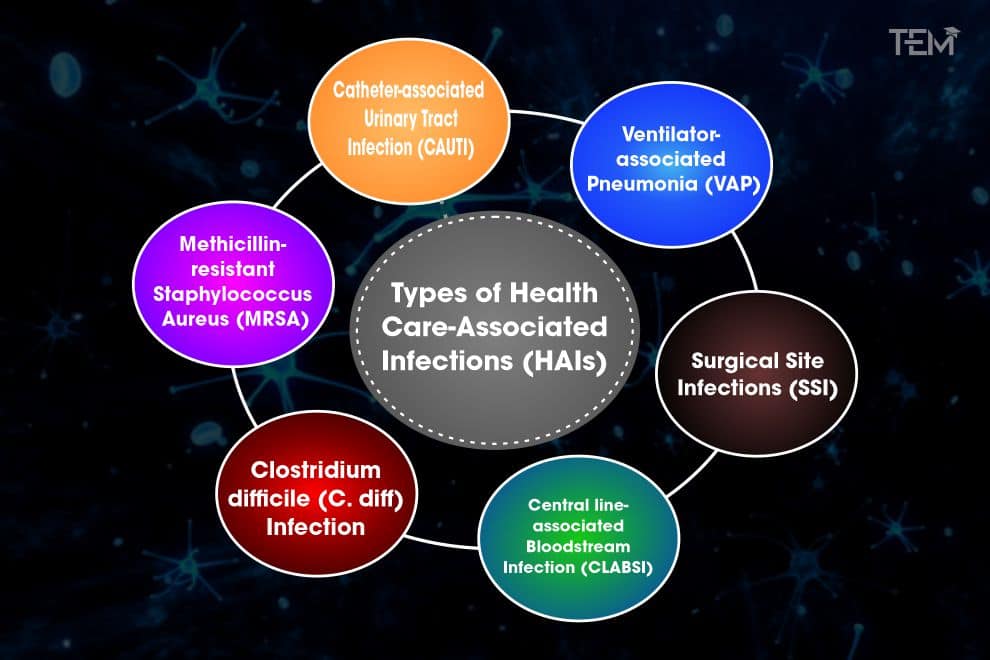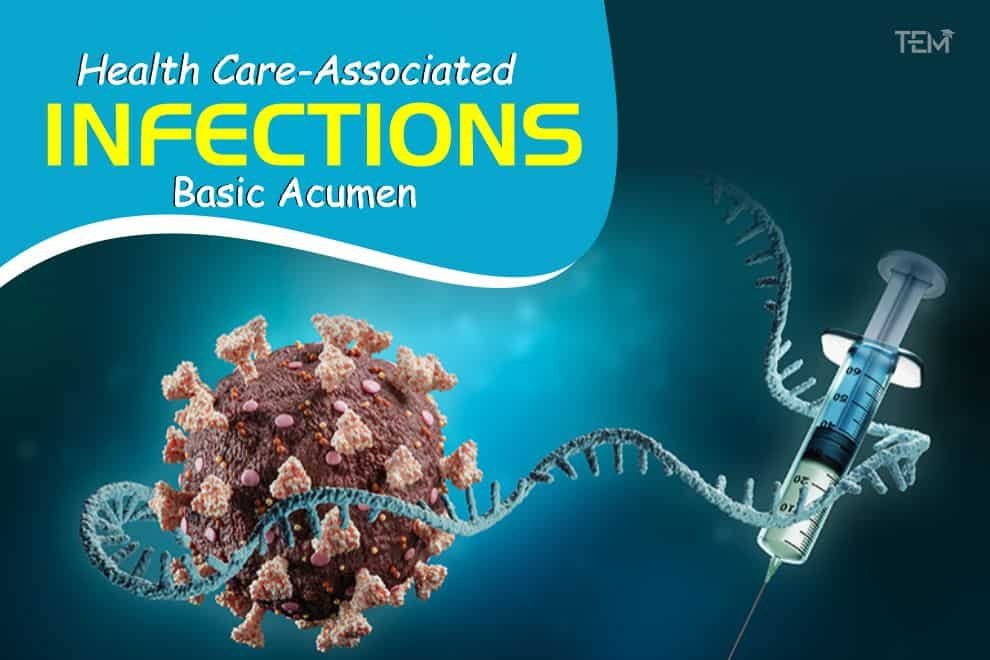Have you ever gotten infected after receiving medical treatment at a hospital? It could be one of the Health Care-Associated Infections (HAIs) that a patient can get at the hospital while receiving any medical care. Such infections may cause serious illness or death. On any given day in the United States, Health Care-Associated Infections affect 1 in 25 patients. It is a serious situation these days and needs to be treated with diligent infection-prevention efforts. Otherwise, it results in mental, financial, and physical consequences.
Which factors will increase the risk of Health Care-Associated Infections (HAIs)?
You might get infected with HAIs through different mediums at various places like nursing homes, hospitals, dialysis centers, ambulatory surgical services, etc. The following factors are responsible for HAIs:
- Injections
- Surgery
- Using infected equipment like ventilators, catheters, etc.
- Outpatient care
Types of Health Care-Associated Infections (HAIs)

Classification of HAIs is based on the type of procedures or devices that are used to provide healthcare services. The most common HAIs are as follows:
- Catheter-associated Urinary Tract Infection (CAUTI): It is the most common kind of Urinary Tract Infections (UTIs) which affects the bladder, kidney, urethra, etc. If you are using a catheter for a long time then there is a 75% chance that you will get infected by UTI. Most hospitalized patients got infected during their stay at the hospital. Therefore, it should only be used in rare cases if there are appropriate indications and should be removed as long as it is not needed.
- Ventilator-associated Pneumonia (VAP): The endotracheal tube is attached to the ventilator so that patient can breathe easily. However, sometimes, bacteria get a chance to enter the lungs of the patient. Although a ventilator creates the way for oxygen for smooth breathing, bacteria transmission into the lungs can result in a serious infection. Moreover, it can cause the proliferation of other germs in your body. To avoid VAP, healthcare professionals should provide disinfected endotracheal tubes.
- Surgical Site Infections (SSI): They take place in your body after any surgical treatment. The surgery increases a patient’s risk of SSI by providing a pathway for bacteria to enter sterile areas of the body. SSI can be found in your skin or deeper within your body or in a particular body part where the surgery took place. It may affect under tissues of your skin to damage other organs permanently.
- Central line-associated Bloodstream Infection (CLABSI): The central line is also known as Central Venous Catheter. It helps your heart to supply fluid and medicines to the body. Furthermore, the central line measures the amount of fluid in the body. Bacteria get a chance to enter the body and cause infection through blood if not disinfected regularly. CLABSI is a serious kind of infection that increases a patient’s stay in the hospital raising hospital bills and causing death.
- Clostridium difficile (C. diff) Infection: C. diff is a kind of germ that can cause a contagious form of diarrhea and colon inflammation. These bacteria affect mainly those people who have been taking antibiotics for a long time. High temperature, loss of appetite, stomach ache, etc. are the symptoms of Clostridium difficile infection. If not treated well, these symptoms can lead to further Health Care-Associated Infections (HAIs).
- Methicillin-resistant Staphylococcus Aureus (MRSA): It is a type of infection that makes your body resistant to regular antibiotics like penicillin. MRSA bacteria cause skin infection through contaminated hands of healthcare providers. It spreads through the insertion of contaminated devices in a patient’s body or if you get into contact with the contaminated wound.
What are the ways to prevent HAIs?
Prevention is better than cure and it is possible to avoid HAIs through proper preventive measures. First of all, you should be aware of all types of HAIs and then you should also know the ways to prevent them. Healthcare professionals should educate and train hospital staff to adopt healthy practices such as infection control, maintenance and careful insertion of equipment, etc. It will make you cautious while receiving any medical treatment. Take the following steps to prevent HAIs:
- Recognize signs and symptoms of infections. Sometimes symptoms are accompanied by fever and headache. Contact your doctor for further guidance.
- If you are using a catheter during treatment, ask your nurse whether it is disinfected and necessary to use it every day.
- You can check the hospital policies regarding the prevention of infection before and after surgery. Ask your doctor how you can prepare to avoid infections during surgery.
- Keep your hands clean. Regular washing of hands keeps germs away from you. It is the best way to avoid falling sick and getting infected.
- Be smart when it comes to using antibiotics and make sure whether you are taking the appropriate medicines or not.
- Protect yourself with an appropriate dosage of vaccines. Regular health check-ups should include an annual flu vaccine routine as recommended by health professionals.
How HAIs can be treated?
HAIs are preventable and are treated as well. They need to be examined as early as possible because such infections spread to different healthcare facilities through infected patients. Treatment for health care-associated infections depends on the type of infection involved. Some of them are treated with the help of antibiotics if there is a bacterial infection.
Final Thoughts
Health care-associated infections are quite usual these days because of a lack of awareness regarding them among patients and the healthcare community. As we learned above how it can result in serious further health, you should have the whole idea about it. Otherwise, these infections will keep hampering your health for a long time. The above article will educate you about basic insights regarding types of Health Care-Associated Infections (HAIs), factors responsible for them, and ways of prevention and treatment.
ALOS READ: Breakthrough or a Miracle? Cancer Drug Trial gets 100% Results












